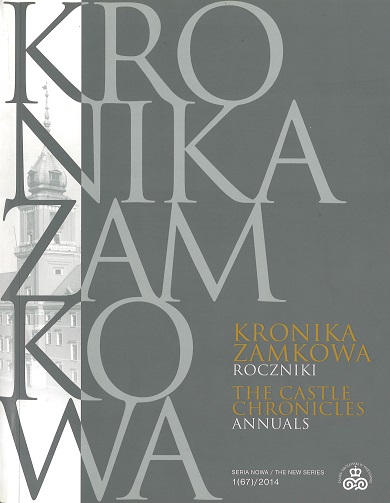W asystencji, w przebraniu, w retorycznym geście: królewski obraz w sakralnym azylu
In Attendance, in Disguise, in Rhetorical Gesture: Royal Image in Sacral Asylum
Author(s): Jacek ŻukowskiSubject(s): History, Fine Arts / Performing Arts, Cultural history, History of Art
Published by: Arx Regia® Wydawnictwo Zamku Królewskiego w Warszawie – Muzeum
Keywords: Sacral Asylum
Summary/Abstract: This text analyses the interpenetration of the religious and secular iconosphere, examined through the mainly unrecognised or forgotten crypto-portraits of the Polish elected rulers (identification portrait, disguised portrait, sakrale Identifikationsporträt) in the context of the Early Modern religious painting. These were primarily portraits in assistenza, usually not concealing the identity of those shown in the scene of adoration of the holy persons. Crypto-portraits sensu stricto were images of people included as active participants in the presented scenes. These were portraits of particular people disguised by a theatrical costume, hidden under a different iconographical “title”, while at the same retaining the double identity. In the third, transitional category, a king was often shown as a commentator of the scene. Static portrait in attendance suggested creatio continua, continuous act of Creation and Salvation, with vision of the future being fulfilled in the present, with the concurrent realisation of the fact that it is impossible to limit the sacrum in terms of time. On the other hand active portraits were branded with the distinct time tension, eased only by the tableau vivant convention. Describing the analogous phenomenon present in France of Louis XIII allows for determining the mechanism at the basis of the described processes, as well as for redefining the practice of the Old Polish painting.
Journal: Kronika Zamkowa. Roczniki
- Issue Year: 1/2014
- Issue No: 1
- Page Range: 7-99
- Page Count: 93
- Language: Polish

